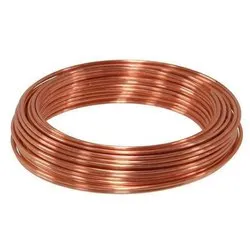Introduction
In a world where innovation knows no bounds, materials science continues to amaze us with its stunning breakthroughs. One such marvel is the Copper Coated Film, an exceptional creation that merges the versatility of films with the conductivity of copper. This powerful combination has paved the way for numerous applications across industries, ranging from electronics to energy and beyond. In this blog, we’ll take a deep dive into the world of copper-coated films, exploring their properties, applications, and the transformative potential they hold.
The Fusion of Form and Function
Copper-coated films, as the name suggests, are thin films or sheets that are coated with a layer of copper. This fusion of materials creates a remarkable synergy that combines the flexibility and lightweight nature of films with the exceptional conductivity of copper. These films are often created using advanced deposition techniques, where a layer of copper atoms is uniformly applied to the surface of a film substrate.
Properties that Dazzle
- Conductivity: One of the most impressive qualities of copper-coated films is their electrical conductivity. Copper is renowned for its exceptional ability to conduct electricity, and when this property is combined with the flexibility of films, it opens up new avenues for applications that require both electrical connections and maneuverability.
- Flexibility: The inherent flexibility of films, combined with the thin layer of copper, results in a material that can be bent, curved, and shaped without sacrificing its electrical performance. This property is invaluable in situations where rigid materials would be impractical or limiting.
- Lightweight: Copper-coated films retain the lightweight characteristics of traditional films, making them suitable for applications where weight is a critical factor. This lightweight nature expands the range of scenarios where these films can be employed.
- Durability: Despite their thinness, copper-coated films exhibit impressive durability and resistance to wear and tear. This quality is essential for ensuring longevity in various applications, especially those that involve repeated flexing or exposure to challenging environmental conditions.
Applications that Shine
- Flexible Electronics: The field of flexible electronics has witnessed a revolution thanks to copper-coated films. These films are used to create flexible circuits, wearable devices, and even rollable displays. The combination of electrical conductivity and flexibility makes copper-coated films an ideal candidate for these applications.
- Energy Storage: Copper-coated films are employed in energy storage devices like batteries and supercapacitors. Their conductivity enhances the efficiency of energy transfer and storage, while their lightweight and flexible nature make them suitable for integration into various form factors.
- Electromagnetic Shielding: In an increasingly connected world, electromagnetic interference (EMI) can pose significant challenges. Copper-coated films serve as effective shielding materials that can block or redirect electromagnetic waves, protecting sensitive electronic components from unwanted interference.
- Sensors: The conductivity of copper-coated films enables their use in various sensor applications. Whether it’s for touch-sensitive surfaces, strain gauges, or even biosensors, these films provide a versatile platform for translating changes in the environment into measurable signals.
The Road Ahead
As technology continues to advance, copper-coated films are poised to play an even more significant role in shaping our future. Researchers and engineers are continuously exploring new ways to enhance the properties of these films, making them more efficient, durable, and cost-effective. From smart clothing that can monitor health metrics to foldable electronics that seamlessly integrate into our lives, the possibilities are truly limitless.



